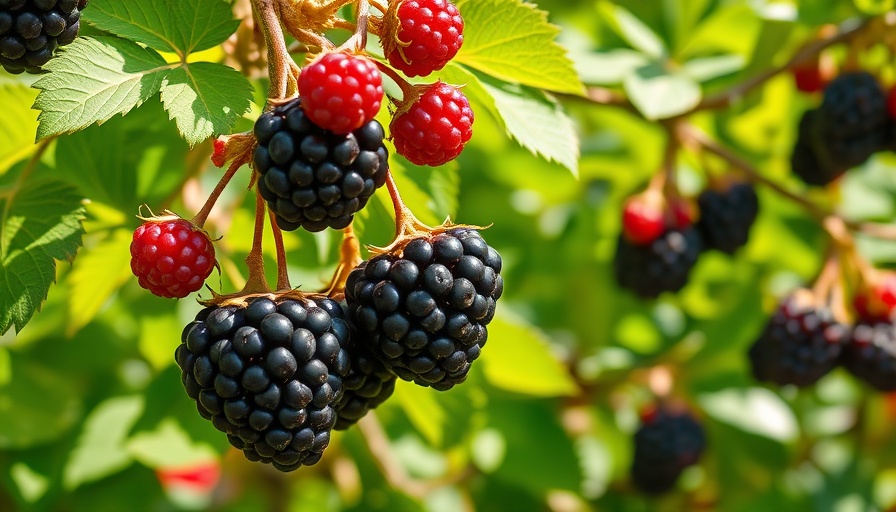
Unlocking the Secrets to Thriving Blackberry Plants
Munching on a ripe blackberry may be one of life's little joys; the burst of flavor and texture is hard to replicate. For urban and suburban homeowners who relish this sweet delight, understanding how to properly fertilize blackberry plants can mean the difference between a sparse harvest and an abundance of juicy berries.
The Importance of Fertilization for Fruitful Blackberry Harvests
Among the many tasks in blackberry cultivation, fertilization stands out as crucial for maximizing yields. With their resilient nature, blackberry bushes don’t require intensive care, but strategic fertilization can significantly enhance fruit quality and quantity. Knowing how and when to fertilize can transform those thick, thorny bushes into vigorous producers.
Choosing the Right Fertilizer: A Flexible Approach
The choice of fertilizer plays a vital role in the health of your blackberry plants. Options range from organic to conventional fertilizers; the best choice largely depends on your gardening philosophy. For many, a balanced, slow-release granular fertilizer, such as a 10-10-10 or 20-20-20 NPK formulation, provides a straightforward, effective solution. While brands like Lily Miller offer reliable choices, composting well-rotted manure adds an organic touch, enriching the soil while minimizing chemicals.
When to Fertilize: Timing is Everything
Timing your fertilization is crucial and can be simplified to two main schedules based on fertilizer type. For granular fertilizers, the ideal time to apply is mid-bloom. Conversely, those opting for liquid fertilizers will need to administer three separate applications throughout the growing season—at leaf bud, flower bud, and berry color change stages. If using compost or manure, the late fall application ensures nutrients are available come the growing season.
Troubleshooting Nutritional Deficiencies
Sometimes, despite your best efforts, your blackberries might exhibit less-than-ideal health. Pale leaves are usually the first sign of nutrient deficiency. Investing in a soil test can inform what specific nutrients may be needed. Adapting your fertilization strategy based on these findings is key to invigorating your bushes.
Actionable Insights for Home Gardeners
Understanding how to care for your blackberries goes beyond mere fertilization. Whether you're a DIY enthusiast or a health-conscious consumer, embracing sustainable practices can enhance your gardening experience. Incorporating techniques identified in practices like climate-friendly gardening and pest-resistant plants can foster not just high-yielding crops, but an entire ecosystem conducive to low-effort gardening.
Future Trends in Blackberry Cultivation
As gardening trends continue to evolve, the move towards organic and sustainable methods is becoming increasingly prominent. Homeowners are not only interested in the fruits of their labor but also in cultivating practices that respect the environment. Combining tried-and-true fertilization methods with innovative gardening hacks can create a harmonious balance for both plants and gardeners alike.
Summary of Valuable Takeaways
In conclusion, knowing how and when to fertilize blackberries is a vital step towards a flourishing berry bush. By selecting the appropriate fertilizer and timing your applications effectively, you can ensure that your plants thrive, ultimately rewarding you with bountiful harvests. The journey of nurturing these delightful fruits is one of empowerment and connection to nature—there is joy in watching your plants grow and flourish under your care.
Take charge of your gardening journey today by implementing these insights! Your blackberry plants—and your taste buds—will thank you.
 Add Row
Add Row  Add
Add 




 Add Row
Add Row  Add
Add 

Write A Comment